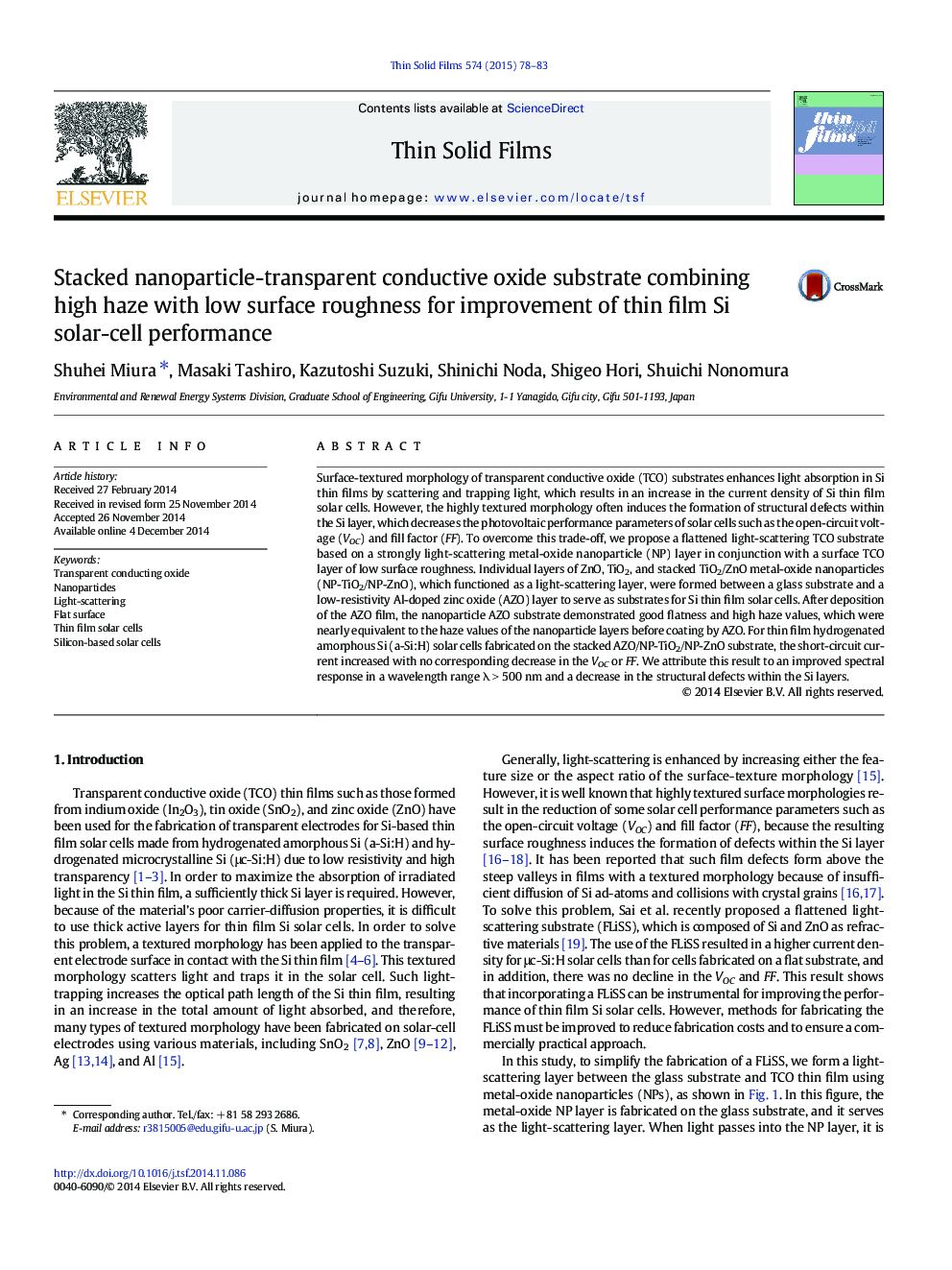| Article ID | Journal | Published Year | Pages | File Type |
|---|---|---|---|---|
| 8034903 | Thin Solid Films | 2015 | 6 Pages |
Abstract
Surface-textured morphology of transparent conductive oxide (TCO) substrates enhances light absorption in Si thin films by scattering and trapping light, which results in an increase in the current density of Si thin film solar cells. However, the highly textured morphology often induces the formation of structural defects within the Si layer, which decreases the photovoltaic performance parameters of solar cells such as the open-circuit voltage (VOC) and fill factor (FF). To overcome this trade-off, we propose a flattened light-scattering TCO substrate based on a strongly light-scattering metal-oxide nanoparticle (NP) layer in conjunction with a surface TCO layer of low surface roughness. Individual layers of ZnO, TiO2, and stacked TiO2/ZnO metal-oxide nanoparticles (NP-TiO2/NP-ZnO), which functioned as a light-scattering layer, were formed between a glass substrate and a low-resistivity Al-doped zinc oxide (AZO) layer to serve as substrates for Si thin film solar cells. After deposition of the AZO film, the nanoparticle AZO substrate demonstrated good flatness and high haze values, which were nearly equivalent to the haze values of the nanoparticle layers before coating by AZO. For thin film hydrogenated amorphous Si (a-Si:H) solar cells fabricated on the stacked AZO/NP-TiO2/NP-ZnO substrate, the short-circuit current increased with no corresponding decrease in the VOC or FF. We attribute this result to an improved spectral response in a wavelength range λ > 500 nm and a decrease in the structural defects within the Si layers.
Related Topics
Physical Sciences and Engineering
Materials Science
Nanotechnology
Authors
Shuhei Miura, Masaki Tashiro, Kazutoshi Suzuki, Shinichi Noda, Shigeo Hori, Shuichi Nonomura,
